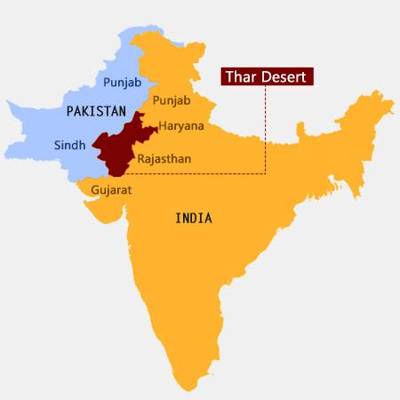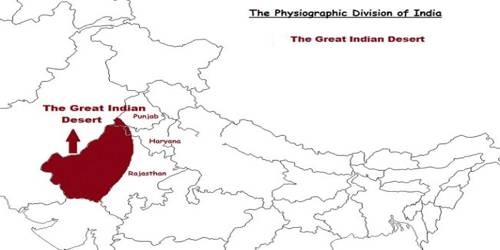The Indian Desert
To the northwest of the Aravali hills lies the Great Indian Desert. It is a land of undulating topography dotted with longitudinal dunes and barchans. The Thar Desert, also known as the Great Indian Desert, is a largely arid region in the northwestern part of the Indian subcontinent that covers an area of 200,000 km2 (77,000 sq mi) and forms a natural boundary between India and Pakistan. This region receives low rainfall below 150 mm per year; hence, it has an arid climate with low vegetation cover. It is because of these characteristic features that this is also known as Marusthali.

It is believed that during the Mesozoic era, this region was under the sea. This can be corroborated by the evidence available at wood fossils park at Aakal and marine deposits around Brahmsar, near Jaisalmer (The approximate age of the wood-fossils is estimated to be 180 million years). Though the underlying rock structure of the desert is an extension of the peninsular plateau, yet, due to extremely arid conditions, its surface features have been carved by physical weathering and wind actions. Some of the well pronounced desert lands feature present here are mushroom rocks, shifting dunes and oasis (mostly in its southern part). On the basis of the orientation, the desert can be divided into two parts: the northern part is sloping towards Sindh and the south towards the Rann of Kachchh. Most of the rivers in this region are ephemeral. The Luni River flowing in the southern part of the desert is of some significance. Low precipitation and high evaporation make it a water deficit region. There are some streams which disappear after flowing for some distance and present a typical case of inland drainage by joining a lake or playa. The lakes and the playas have brackish water which is the main source of obtaining salt.
















